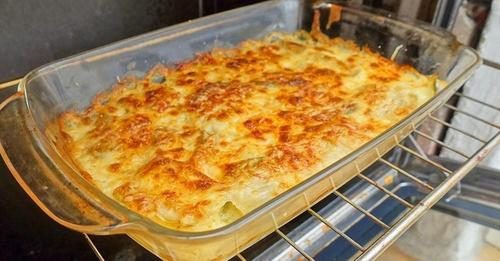What Are The Differences Between Plastic Wrap And Saran Wrap?
When it comes to using the microwave to cook food, one must be cautious of the materials that go in as some items are unsuitable for such an environment. Is the saran wrap one of them? Or is it safe for them to be microwaved instead of plastic wraps? Keep reading to find out.
;)
People nowadays lead very busy lives, which sometimes demands that they employ the use of shortcuts to get meals on the table quickly. A good example of one such shortcut is the use of the microwave to cook food.
Unfortunately, the convenience comes at a price: not all items can or should be microwaved. Some include aluminum foil, take-out containers, and eggs in their shells. But what about saran wraps? Can they go in the microwave?
Keep reading to find that out, as well as to discover the differences between plastic wrap and Saran wrap to see which one is more suitable for the microwave.
Can You Microwave Saran Wrap?
Saran wrap can be microwaved, but this depends on several factors. The traditional saran wrap is made of polyvinylidene chloride (PVDC) – a compound that has been deemed unsafe for cooking or reheating food in the microwave.
However, microwave-safe options manufactured from polyethylene terephthalate (PET) are now available. These wraps are tagged “microwave-safe” and can be microwaved.
Note that Saran Wrap is made of polyethylene, a plastic-type. It is safe to use in the microwave, but note that it can start to melt at high temperatures. As such, it is crucial to ensure that the wrap doesn’t come into contact with too hot food.
Remember to also leave a small gap between the edge of the dish and the wrap. This will provide an avenue for steam to escape. Also check the food constantly before eating it to ensure it’s not too hot.

Can You Microwave Plastic Wrap?
The simple answer is yes, but you must do so carefully. Plastic wrap is made from polyethylene, a form of plastic safe for humans. However, when it is exposed to heat, the wrap can release chemicals that may harm your health.
When microwaving food with plastic wraps, ensure the plastic wrap does not touch the food too. Doing so will prevent the food from becoming contaminated with chemicals from the plastic.
Also make sure the plastic wrap is tight enough, or else it could allow steam to escape and lead to splattering. It’s also important to avoid plastic wrap not labeled “microwave-safe.”
Some Differences Between Saran Wrap And Plastic Wrap
Plastic wrap and Saran wrap are two products that have proven useful when it comes to food storage but they have some differences. Below are some differences between these two products.
- Saran wrap is made from PVC (polyvinyl chloride), which makes it impervious to oxygen and moisture while plastic wrap is made from polyethylene. This means Saran wrap is more effective at clinging to surfaces and less likely to tear. Polyethylene is considered safe for microwave use, while PVC can release harmful chemicals when heated.
- Saran wrap is often thinner than plastic wrap which makes it better at sealing in food and preventing leaks. Plastic wrap is less expensive but it is less effective at keeping food fresh and more likely to tear.

Conclusion
There are merits and demerits to using plastic wrap and Saran Wrap. In the end, it is up to you to decide which product you prefer. Saran Wrap, which is made of PVC, can be safely microwaved, while plastic wrap, made of polyethylene, should not be microwaved.
If you are uncertain about whether the plastic wrap you are using is safe for microwave use, consult the label or contact the manufacturer.
;Resize,width=767;)
;Resize,width=712;)


